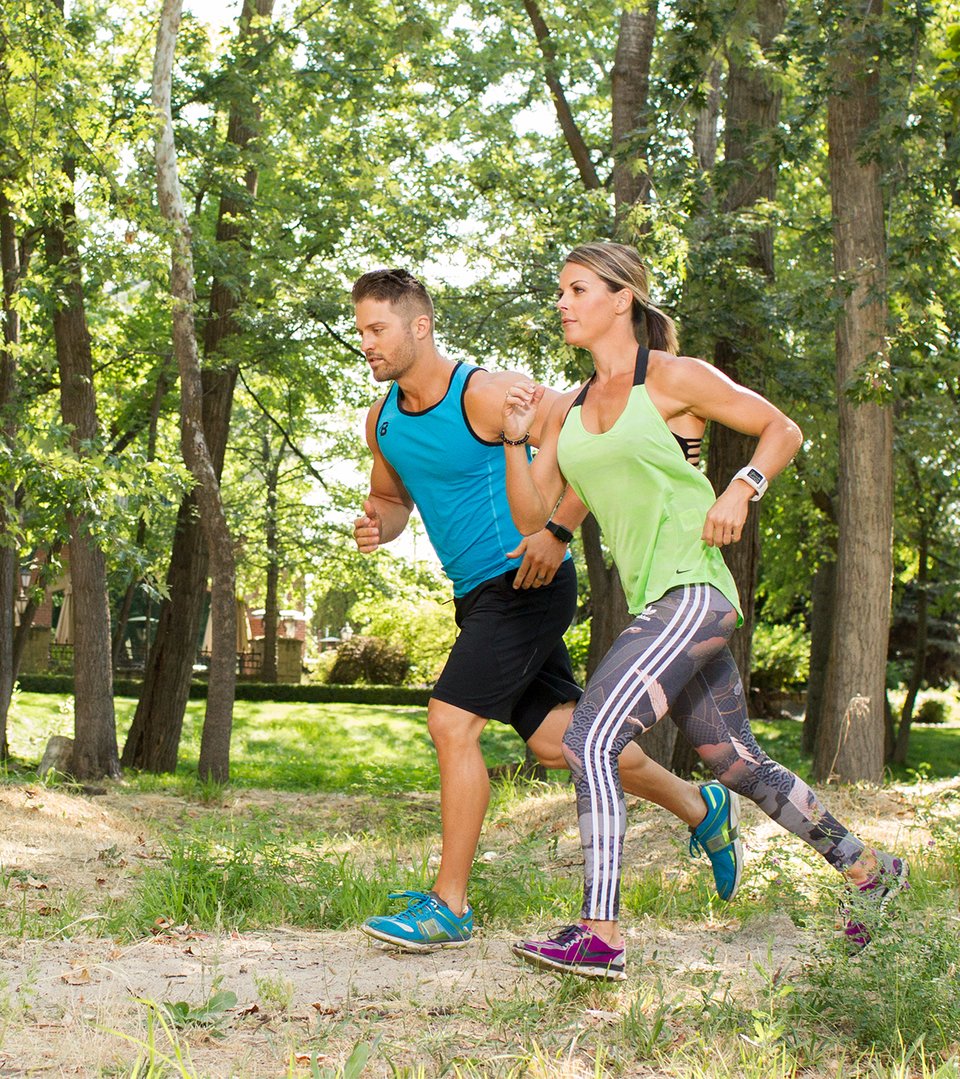Here are some of the top benefits, and well as things to keep in mind, when taking your training from the gym to the pavement.
Take in The Fresh-Air Benefits
Whether you're training for a triathlon or just doing some bodyweight exercises in the green space next to the gym, being outside increases your sun exposure, which ups your vitamin D levels. Vitamin D has been associated with increased bone health, more efficient metabolic function, improved immune function, and endorphin production.Increase Your Motivation to Train
Training outdoors has also been shown to help send your motivation levels soaring. Because the stimulus around you is always shifting, it keeps you focused by reducing boredom—as anyone who's looked at the same gym walls all winter knows well, says Jeff Yellin, DPT, CSCS, and regional director of Professional Physical Therapy in Long Island and Queens, New York.
Torch Additional Calories
For those looking to burn calories, an outdoor workout is likely to get you to your goals faster, according to Jimmy Minardi, CPT, owner of Minardi Training in New York City, Aspen, and Santa Barbara.That's because being outdoors in the wind and on uneven ground creates additional resistance challenges that increase calorie burn. Your body works harder to maintain stability, recruiting more muscles for the effort.[1] That can keep a steady calorie burn going for 24 to 36 hours after a workout, depending on exercise intensity and type of training.
Temperature plays a part, too. When your body has to adjust to cooler temps—and even that summer breeze—your metabolism adjusts in order to compensate. That switch, although subtle, can burn more calories.
Be Careful, Though…
One of the big differences between working out in a gym versus working out outdoors is that the latter can be more unpredictable. While cool temperatures, uneven terrain, and sunshine can all provide benefits, they also can spring unwelcome surprises on the unprepared.This seems like a no-brainer, but check the weather report ahead of time. If you live in Las Vegas and the temperature will hit 120 degrees F that afternoon, skip the 10-mile run. And regardless of the weather, dress appropriately. Hydrate in advance, especially on warm and sunny days. Even minor dehydration can lead to cramping and increased risk of muscle sprains and strains.
Looking for some outdoor workouts to kick off your summer training? Check out these minimal-equipment workouts and these athlete-approved outdoor training tips.
References
- Zamparo, P., Perini, R., Orizio, C., Sacher, M., & Ferretti, G. (1992). The energy cost of walking or running on sand. European Journal of Applied Physiology and Occupational Physiology, 65(2), 183-187.
Click Here For More Articles

No comments:
Post a Comment